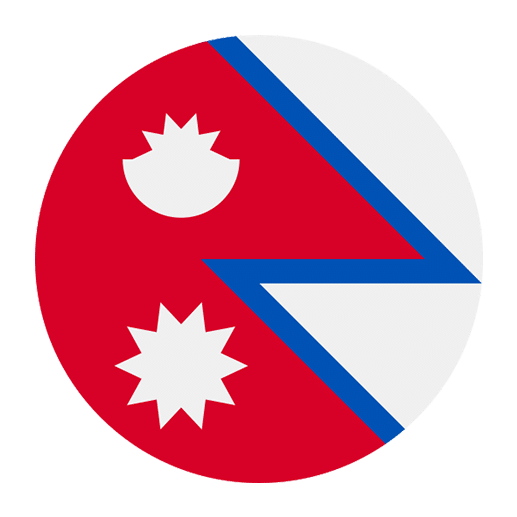Nepali, the official language of Nepal, is a rich and vibrant language with its own unique grammar and syntax. For English speakers, one of the most intriguing aspects of learning Nepali is understanding how adjectives function within the language. Adjectives in Nepali can vary significantly from their English counterparts, both in terms of structure and usage. This article aims to provide a comprehensive overview of Nepali adjectives, their types, and their functions, to help language learners grasp this essential part of Nepali grammar.
The Basics of Nepali Adjectives
Before diving into the types and functions of Nepali adjectives, it is important to understand some basic principles. Nepali adjectives, like those in English, are words that describe or modify nouns. They provide additional information about the size, shape, color, quantity, and other qualities of the noun they describe.
In Nepali, adjectives typically precede the nouns they modify, which is similar to English. For example:
– सुन्दर घर (sundar ghar) – beautiful house
– ठूलो कुकुर (thūlo kukur) – big dog
– रातो फूल (rāto phūl) – red flower
However, Nepali adjectives can also change form based on the number and gender of the nouns they describe. This is a key difference from English and a crucial aspect to understand when learning Nepali.
Types of Nepali Adjectives
Nepali adjectives can be categorized into several types based on their functions and forms. Here, we will explore the primary types of adjectives you will encounter while learning Nepali.
Descriptive Adjectives
Descriptive adjectives, as the name suggests, describe the qualities or characteristics of a noun. These are the most common types of adjectives and are used to provide more information about a noun. Examples include:
– राम्रो (ramro) – good
– निलो (nilo) – blue
– मिठो (miṭho) – sweet
– लामो (lāmo) – long
Descriptive adjectives can change their forms based on the number and gender of the nouns they modify. For instance, the adjective राम्रो (ramro) changes as follows:
– राम्रो केटा (ramro keṭā) – good boy (singular, masculine)
– राम्रा केटीहरू (rāmra keṭīharū) – good girls (plural, feminine)
Quantitative Adjectives
Quantitative adjectives indicate the quantity or amount of a noun. These adjectives do not change form based on gender or number. Examples include:
– धेरै (dherai) – many
– केही (kehī) – some
– थोरै (thorai) – few
For instance:
– धेरै मानिसहरू (dherai mānisharū) – many people
– केही पुस्तकहरू (kehī pustakharū) – some books
– थोरै पैसा (thorai paisā) – few money
Demonstrative Adjectives
Demonstrative adjectives point out specific nouns and are used to indicate which noun is being referred to. Common demonstrative adjectives in Nepali include:
– यो (yo) – this
– त्यो (tyo) – that
– यी (yī) – these
– ती (tī) – those
Examples of usage:
– यो किताब (yo kitāb) – this book
– त्यो मान्छे (tyo mānchhe) – that person
– यी फूलहरू (yī phūlharū) – these flowers
– ती घरहरू (tī gharharū) – those houses
Possessive Adjectives
Possessive adjectives indicate ownership or possession and are used to show that something belongs to someone. In Nepali, possessive adjectives change based on the gender and number of the noun they modify. Common possessive adjectives include:
– मेरो (mero) – my
– तिम्रो (timro) – your (informal)
– उसको (usko) – his/her
– हाम्रो (hāmro) – our
Examples:
– मेरो पुस्तक (mero pustak) – my book
– तिम्रो घर (timro ghar) – your house
– उसको कलम (usko kalam) – his/her pen
– हाम्रो देश (hāmro desh) – our country
Interrogative Adjectives
Interrogative adjectives are used to ask questions about nouns. The most common interrogative adjectives in Nepali are:
– कुन (kun) – which
– कति (kati) – how many/much
Examples:
– कुन किताब (kun kitāb) – which book
– कति पैसा (kati paisā) – how much money
Indefinite Adjectives
Indefinite adjectives refer to non-specific items or amounts. These adjectives are similar to indefinite pronouns but function as adjectives. Common indefinite adjectives include:
– केही (kehī) – some
– धेरै (dherai) – many
– केही (kehī) – a few
Examples:
– केही मान्छे (kehī mānchhe) – some people
– धेरै काम (dherai kām) – much work
– थोरै समय (thorai samay) – a little time
Functions of Nepali Adjectives
Now that we have covered the primary types of Nepali adjectives, let’s explore their functions in sentences. Understanding how adjectives function will help you use them correctly in your conversations and writing.
Attributive Adjectives
Attributive adjectives are placed directly before the noun they modify. This is the most common function of adjectives in Nepali. Examples include:
– हरियो घाँस (hariyo ghā̃s) – green grass
– ठूलो घर (thūlo ghar) – big house
– मिठो खाना (miṭho khānā) – delicious food
In these examples, the adjectives हरियो (hariyo), ठूलो (thūlo), and मिठो (miṭho) describe the nouns घाँस (ghā̃s), घर (ghar), and खाना (khānā), respectively.
Predicative Adjectives
Predicative adjectives are used after a linking verb to describe the subject of the sentence. In Nepali, the most common linking verb is हुनु (hunu), which means “to be.” Examples include:
– यो फूल रातो छ (yo phūl rāto cha) – This flower is red.
– उहाँ राम्रो हुनुहुन्छ (uhā̃ ramro hunuhunchha) – He/She is good.
– किताब ठूलो छ (kitāb thūlo cha) – The book is big.
Here, the adjectives रातो (rāto), राम्रो (ramro), and ठूलो (thūlo) describe the subjects फूल (phūl), उहाँ (uhā̃), and किताब (kitāb), respectively, and follow the linking verb छ (cha) or हुनुहुन्छ (hunuhunchha).
Comparative and Superlative Adjectives
Just like in English, Nepali adjectives can also be used to make comparisons. Comparative adjectives compare two nouns, while superlative adjectives compare three or more nouns.
In Nepali, the comparative form of an adjective is typically created by adding the word भन्दा (bhanda) after the noun being compared. The superlative form is created by using the word सबैभन्दा (sabaibhanda) before the adjective. Examples include:
Comparative:
– यो किताब त्यो किताबभन्दा राम्रो छ (yo kitāb tyo kitābbhanda ramro cha) – This book is better than that book.
– राम श्यामभन्दा अग्लो छ (Rām Syāmbhanda aglo cha) – Ram is taller than Shyam.
Superlative:
– यो सबैभन्दा ठूलो घर हो (yo sabaibhanda thūlo ghar ho) – This is the biggest house.
– उनी सबैभन्दा राम्रो विद्यार्थी हुन् (unī sabaibhanda ramro vidyārthī hun) – She/He is the best student.
Agreement of Adjectives
One of the unique aspects of Nepali adjectives is their agreement with the nouns they modify in terms of gender and number. This differs from English, where adjectives do not change form based on the noun they describe.
In Nepali, adjectives can have different forms depending on whether the noun is masculine or feminine, singular or plural. Let’s look at some examples to illustrate this:
Masculine Singular: राम्रो केटा (ramro keṭā) – good boy
Feminine Singular: राम्री केटी (rāmrī keṭī) – good girl
Masculine Plural: राम्रा केटाहरू (rāmrā keṭāharū) – good boys
Feminine Plural: राम्रा केटीहरू (rāmrā keṭīharū) – good girls
Note how the adjective राम्रो (ramro) changes to राम्री (rāmrī) and राम्रा (rāmrā) to match the gender and number of the noun it describes.
Special Cases and Irregular Adjectives
As with any language, there are always exceptions and special cases that learners need to be aware of. Some Nepali adjectives have irregular forms or follow different rules. Here are a few examples:
– सानो (sāno) – small
– Singular: सानो केटा (sāno keṭā) – small boy
– Plural: साना केटाहरू (sānā keṭāharū) – small boys
– ठूलो (thūlo) – big
– Singular: ठूलो घर (thūlo ghar) – big house
– Plural: ठूला घरहरू (thūlā gharharū) – big houses
In these examples, the adjectives सानो (sāno) and ठूलो (thūlo) change form to साना (sānā) and ठूला (thūlā) in the plural.
Another special case is the adjective for “good,” which has different forms based on the context:
– राम्रो (ramro) – good
– Masculine Singular: राम्रो केटा (ramro keṭā)
– Feminine Singular: राम्री केटी (rāmrī keṭī)
– Masculine/Feminine Plural: राम्रा केटाहरू/केटीहरू (rāmrā keṭāharū/keṭīharū)
Common Mistakes and Tips for Learning Nepali Adjectives
Learning a new language always comes with its set of challenges, and Nepali is no exception. Here are some common mistakes English speakers make when learning Nepali adjectives and tips to overcome them:
1. Forgetting Agreement: One of the most common mistakes is forgetting to make adjectives agree with the gender and number of the noun. Always remember to adjust the adjective form to match the noun.
2. Misplacing Adjectives: Unlike in English, where the adjective usually precedes the noun, some learners might place the adjective incorrectly. In Nepali, adjectives almost always come before the noun they modify.
3. Overusing Comparative and Superlative Forms: Be mindful of the context when using comparative and superlative forms. Overusing them can lead to awkward sentences.
4. Practice and Exposure: The best way to master Nepali adjectives is through practice and exposure. Engage in conversations, read Nepali texts, and listen to native speakers to get a better grasp of adjective usage.
Conclusion
Understanding Nepali adjectives, their types, and functions is a crucial step in mastering the language. While it may seem complex at first, with practice and consistent exposure, you will become more comfortable using adjectives correctly. Remember to pay attention to agreement in gender and number, and practice regularly to reinforce your learning. With these tips and insights, you are well on your way to becoming proficient in Nepali adjectives and enhancing your overall language skills. Happy learning!

